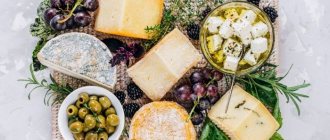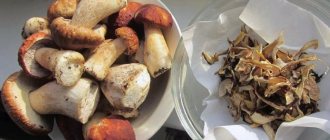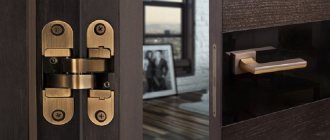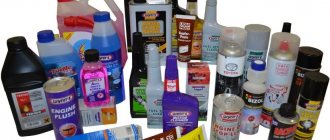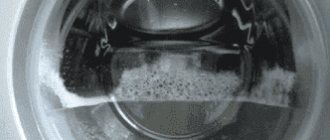Would you like to pamper your family or friends with delicious and aromatic pastries? Take a responsible approach to the process: carefully measure, beat thoroughly, mix carefully, pour and sprinkle with love. And then again – and it doesn’t work! It burns from above or below without being baked inside. All the work is in vain. Capricious ovens discourage any desire to cook anything in them.
In fact, this unit is not at all capricious if you know its basic operating rules and use them correctly. It would be a good idea to study the instructions, as they may describe the nuances of the operation of your particular model that other ovens do not have.
Rules for using the oven
- Nothing extra. When cooking buns, pizza and pies, be sure to remove all foreign objects from the oven. Even a small saucepan or baking sheet disrupts the correct distribution of hot air flows;
- Maximum warm-up. Turn on the gas at full power for 15 minutes, then reduce the temperature to the required temperature according to the recipe. After another 5 minutes, you can place the buns in the oven;
- Correct location. Place the pan with the future cake on the oven rack, placing it in the middle. This way the heat will flow freely around the product, heating it evenly from all sides;
- Keep your hands off the door. During the cooking process, it is better not to look into the oven at all. Or look in a minimum number of times, and best of all, through a window specially designed for this purpose. Each time you open the oven, the temperature inside the oven decreases, which many types of dough really don’t like. They may even fall off or settle! Yes, such attention is harmful to roast meat, and you may not get a beautiful crust;
- Rest. The oven is turned off, but it’s better not to rush taking the finished dish out of it. The food should sit for a while and rest until it reaches its proper condition.
Why do baked goods burn in a gas or electric oven?
Most often, owners of gas ovens complain about products burning on the bottom. In this case, observing the temperature regime, recipes and little folk tricks to combat unruly ovens will help.
But it also happens that the top crust of a dish burns. What should you do if the top of the baked goods burns in the oven?
- Adjust the temperature to a lower temperature;
- Move the tray with pies from the top rack to the middle one;
- Cover the crust with a sheet of foil or damp paper.
What about electric ovens? There are now a great variety of them - different sizes, shapes and configurations. What are their advantages?
Thanks to uniform heating on both sides (top and bottom), convection and grilling, uniform heat distribution and the desired temperature regime for each individual dish are achieved.
It is very convenient that this oven is equipped with a timer and thermostat, which itself maintains the desired temperature. And in the instructions supplied by the manufacturer there are convenient signs with explanations about the use of this or that mode.
The main reasons for burning in such ovens are the incorrect use of these modes; they must be strictly adhered to. And also, like gas ovens, electric ovens are suitable for traditional methods of improving the quality of baked goods, which we will discuss below.
What to do if baked goods stick to paper
To prevent culinary products from sticking to the pan or baking sheet, they are either greased with oil or lined with parchment paper. Sometimes it happens that the pie sticks to the parchment because the dough is too wet or the filling has leaked. In this situation, the main task is to remove the paper so that the shape of the product is not damaged.
What you can do:
- Wait until the baked goods have cooled completely. Perhaps the parchment will peel off;
— place the baking sheet on a wet towel for 5 minutes;
- Carefully remove the cake along with the paper and place it on a damp cloth. The parchment will become soggy and come off easily.
Here's how to prevent parchment paper from sticking:
- grease the parchment with oil and sprinkle with a little flour;
- choose paper from an already trusted manufacturer;
- If the parchment is covered with a layer of silicone, then the dough should be placed on this side of the paper. Note: You can see which side has the silicone coating by holding the paper up to the light. The silicone will have a damp shine.
Secrets of temperature regime
- We follow the recipe. What temperature is indicated in it, it is at this temperature that we prepare the dish;
- Such important pallets. Sometimes even using trays from other ovens can block the circulation of hot air and ruin baked goods;
- Please pay attention to the size. A large cake needs more time to bake, but at a lower temperature than a small one. Small baked goods at low temperatures will not bake, but will simply dry out;
- Subsequence. In a gas oven, the main level is medium, so we start with it. Only then, having assessed the process of preparing the dish, we move it up (to brown the crust) or down (if you need to fry the bottom);
- Universal temperature. The optimal mode is 180ºС, but there are dishes that do not obey this mode:
Pizza – 220°С
Meringue – 140°С
Lasagna – 200°C
Fish – 150-180°C
Pies with filling and just large pies – 190-200°C
Small pies and small pastries – 200-220°C
Rules for using the oven
Usually, all problems with a gas oven begin at the moment when the owners stop properly caring for it. This does not apply to manufacturing defects, which can be detected before the warranty expires.
Before preparing any dish, you must thoroughly study the oven instructions and recipe. These are two components of a perfect dish.
To avoid breakdowns, follow the rules:
- call a gas service worker every year for an inspection;
- do not forget to check the oven before turning it on so as not to fry foreign objects;
- clean the oven after each use;
- To install the oven, call a professional, do not do it yourself.
Prepare baked goods only on an aluminum baking sheet or in special containers designed for this purpose.
Remember, working with gas is a high-risk activity; do not expose yourself and your loved ones to it. Take this issue seriously and use the help of professionals.
Importance of Formulation
Sometimes, even despite all the attempts and efforts, the cake still remains raw on the inside and burnt on the outside. Then it is logical to assume that the problem here is in the test itself, since each type of it loves an individual approach.
Shortbread dough
Use chilled ingredients. The butter should be soft, but not melted. It is better to remove egg whites altogether.
This dough should not be kneaded for a long time. This causes it to thicken, becoming hard and easily burning.
Puff pastry
One wet, inedible cake instead of crispy, golden-brown slices? Perhaps, instead of crushed butter with a knife, you put melted butter in the dough, which is unacceptable in this recipe. Or baked a layered treat at a low temperature? It should reach 200-220°C.
Yeast dough
Loves leisurely and thorough kneading. But flour should be in moderation. And of course, this type of dough must stand and rise. Without this, it will immediately form a crust in the oven and burn.
Biscuit
This is a tender, fluffy egg dough. The whites and yolks must be beaten separately, and after mixing all the ingredients, immediately place the product in a preheated oven.
What else can interfere with proper baking?
- Poorly beaten eggs;
- Excess sugar and oil;
- Keeping soda in the dough for a long time. Baking should be placed in the oven immediately after introducing this ingredient.
Signs and causes of malfunction
There are several situations in which the oven does not heat up. Each of the breakdowns has its own distinctive features:
- The device does not heat up to the required temperature. It is impossible to predict how hot the oven will heat up in this case. In the same position of the control knob, the thermometer shows different values each time. This all points to a failure of the thermostat - the sensor that regulates the heating. If its contact has oxidized or the sensor itself has failed, the control unit will constantly receive different signals from it and change the level of heat inside.
- The temperature does not rise above 100-150°. The surest sign of this problem is a long cooking time. If you bake the pie not in 40 minutes, as written in the recipe, but in 2 hours, and it is not ready yet, it means that the device cannot provide enough heat to bake the dough. There may be several sources of problems: a breakdown in the power cord, a malfunction of one of the heating elements, a thermostat defect, and even wear on the door seal.
- The electric oven does not heat from below. Often, users notice that the dish is burnt on top, but not cooked through from the bottom. Most often the reason is damage to the lower heating element. But if your model has 4 heating elements, the bottom should be heated from side sources. If they fail, the reason is the fan is worn out.
- The device turns on but remains cold. Electric stoves have a complex wiring system, one part is responsible for lighting, the other for heating the burners, and the third for the roaster. If the oven in the electric stove does not heat, but the light turns on, this indicates a defect in the wiring: the contact has come loose, the wire has been broken.
- The indicator light does not light up. If you turn the switch and the roaster light doesn't come on, check to see if the heating elements are getting at least a little warm. If not, the problem could also be with the internal wiring or power supply.
We tame the shrew using folk methods
The disadvantage of gas stoves is uneven heating. The gas burns below, so it's hottest there. You can try to adjust the nozzles to distribute the heat more evenly; only a specialist can do this. But there are also special methods, proven by housewives and time:
- Special stone for baking. You can also use regular red brick. Thanks to their fine-porous structure, they heat up well and perfectly accumulate and distribute heat;
- A baking tray with 1-2 kilograms of coarse rock salt or sand placed at the bottom of the oven. The salt will take away the excess heat, allowing your dish to cook through without burning. Can be used many times. Over time, the salt bakes into a uniform crust, which does not at all affect its beneficial properties;
- Metal bowl with water. The liquid must be added in a timely manner, otherwise burnt vegetables or meat will not thank you. This method is also not suitable for small baked goods;
- A special mold with a hole in the middle also facilitates better baking of the filling inside the pie.
Why do you need a tile tray?
Under the oven on most stoves there is an opening or drawer. It is called the sub-oven compartment. Some people mistakenly believe that its purpose lies in isolating the hot bottom of the oven from the floor covering, but this option is actually incorrect, although logically speaking, one might actually think so.
The opinions of other people were divided. Some suggest that the box is intended for storing dishes, others claim that it is for heating food.
The tray is almost ideal for storing kitchen utensils. It is hidden from view and easily accommodates several frying pans for which there is little space in the kitchen set. It is also convenient to take dishes from it and you don’t have to go far from the stove.
The Lysva GP 400 MS-2 gas stove also has a lower niche in its design, designated as an auxiliary cabinet. The instructions indicate that this is a place to store kitchen utensils
This version is not unfounded, since after looking at the instructions for some gas stoves we find a drawing of the device, where this part is designated as a “pull-out auxiliary cabinet”.
At the same time, there are cookers on sale in which the tray is equipped with additional inserts in the drawers, leaving no doubt as to whether they are used for storing dishes.
Is it worth closing the topic on this, since what the drawer under the oven of a gas stove is intended for seems to have been clarified? Not at all. It turns out that supporters of the second theory also have reasons to consider their opinion correct.
Again, let's look at the instructions. On many stoves, the compartment is designated as a warming cabinet and is detailed in the literature that it can be used to keep food warm while the oven is operating.
True, few people use this function; consumers believe that a warm box is not suitable for preserving food due to large gaps and inconvenience of use, although opponents of microwave ovens who do not know about this possibility of the stove will certainly greet the news with a bang.
Opinions of users are again divided. Some say that the cabinet dries dishes, while others are delighted and claim that the function has simplified the organization of serving hot food for feasts.
The pan heats up and takes a long time to cool down. The dishes contained in it remain fresh and are evenly heated, maintaining a warm temperature as long as the metal insert holds it
In any case, let's take a closer look at how it works. When the oven is turned on, hot air from the oven penetrates the pan and heats its metal walls. Thus, what is inside it is constantly heated.
For example, you cook potatoes as a side dish, and bake fish in foil with it. It is much more pleasant to eat the whole dish hot, rather than ice-cold potatoes with hot fish. You simply put the potatoes in a box, and when the second component is ready, take it out and serve everything.
However, it is also worth remembering that some ovens provide for draining condensate into special containers, so before putting food in the heating drawer, do not forget to remove it and drain the accumulated liquid from it.
So, we found out that the bottom oven drawer can be used depending on the model:
- for storing dishes;
- for heating food;
- for both at the same time.
But this is not all you need to know when using it.
Common malfunctions and breakdowns of gas ovens
If during the inspection process it was not possible to identify any such defect, then the reason may be a breakdown of the thermostat.
- breakdown of the internal thermostat, shutdown of the oven during cooking due to the thermocouple contact moving away from the valve;
- bending of the hose, and as a result – unstable gas supply to the oven;
- poor heating of the oven due to the shift of the thermocouple tip;
- connection to electricity is disconnected (subject to electric ignition);
- broken ignition handle;
- valve winding rupture;
- Damage to the auto shut-off system due to a gas leak, the oven turning off during cooking or the inability to connect;
- turning off the gas supply immediately after releasing the tap;
- improper heat distribution due to wear of the rubber gasket between the door and the body.
If we look at the problem from a technical point of view, then most often the problem lies in improper heat distribution.
Why isn't the middle of the cake baked?
So, one of the most common reasons is lack of accuracy. If you shake the dough, the baked goods will most likely not be
it will turn out as magnificent as the hostess herself wants to see it.
When preparing delicate dishes such as biscuits or muffins
do not close the door suddenly. You need to carry the dough carefully.
Interesting materials:
How many times can you send friend requests on VKontakte? How many likes can you give on Instagram? How long should you wear a bandage after heart surgery? How long does it take to charge the bracelet? How long should I charge my Philips trimmer? How many finds are there in The Last of Us 2? How many weeks are there in January 2022? How much nicotine is in an electronic cigarette? How much nicotine is in purple sticks? How much nicotine is in Maskking?
Secrets from experienced housewives
When even following the above rules does not help, and the product still burns, you have to use techniques tested by experienced chefs. At home you can do the following:
- The pies will stop burning if you place a fireproof brick at the very bottom of the chamber. Just first you need to clean it, wash it if necessary and dry it.
Tip: The tops of savory products will set and bake in the oven a little faster if you brush them with beaten egg yolk before cooking. And sweet preparations are treated with sweetened and strongly brewed black tea for the same purpose.
- When there is no brick or you don’t want to use it for aesthetic reasons, you can take coarse salt. It is placed in a bowl made of heat-resistant material and placed under the baking rack.
- They also sometimes place a container of water in a gas oven. The liquid evaporates, raising the temperature slightly. But the products do not burn, but are evenly baked. If you want a golden brown crust to appear on your culinary masterpiece, water should be used only in the first half of baking. A dish prepared in this way also turns out juicier than usual.
Despite the simplicity of the methods, they have proven their effectiveness. If such approaches do not give the desired result, and the top and bottom continue to bake unevenly, this indicates violations of the rules for the production of semi-finished products.
Secrets from experienced housewives
When even following the above rules does not help, and the product still burns, you have to use techniques tested by experienced chefs. At home you can do the following:
- The pies will stop burning if you place a fireproof brick at the very bottom of the chamber. Just first you need to clean it, wash it if necessary and dry it.
Tip: The tops of savory products will set and bake in the oven a little faster if you brush them with beaten egg yolk before cooking. And sweet preparations are treated with sweetened and strongly brewed black tea for the same purpose.
- When there is no brick or you don’t want to use it for aesthetic reasons, you can take coarse salt. It is placed in a bowl made of heat-resistant material and placed under the baking rack.
- They also sometimes place a container of water in a gas oven. The liquid evaporates, raising the temperature slightly. But the products do not burn, but are evenly baked. If you want a golden brown crust to appear on your culinary masterpiece, water should be used only in the first half of baking. A dish prepared in this way also turns out juicier than usual.
Despite the simplicity of the methods, they have proven their effectiveness. If such approaches do not give the desired result, and the top and bottom continue to bake unevenly, this indicates violations of the rules for the production of semi-finished products.
Rules for operating gas ovens
When it comes to the rules for operating gas ovens, we usually think of the oven as a regular gas stove.
In fact, the rules for using both a regular and an ultra-modern gas oven are approximately the same and include almost the same points. Before use, excess appliances are removed from the oven (many people use this place as an additional cabinet for storing dishes and utensils);
The oven burner is ignited - first the gas supply is turned on with the handle, and after 1-2 seconds the electric ignition button is pressed. In models without a piezoelectric element, the operation is carried out in the reverse order - first, light a match and bring it to the burner, and only after that turn the gas supply knob.
After the burner is lit, without releasing the gas supply knob, the door closes. After 10-15 seconds, the presence of a flame on the burner is checked. After this you can release the handle. This is necessary so that the thermocouple reacts to the heat supply and does not block the safety valve.
After the burner is lit, the gas supply regulator knob is set to the required position indicating the temperature. Next, according to the operating instructions, the time required for the oven to reach the set temperature is recorded.
The prepared baked goods are placed on a baking sheet. The door is opened and, according to baking recommendations, the baking sheet is placed in the desired position in the oven. The door is closed and the cooking timer is set.
When baking flour products, you need to remember that you cannot open the door until the baking process is completed. Control can only be done through the door window. But when baking meat, poultry and fish, you can open the door, although the cooking time will be a little longer.
The operating instructions for the oven, in addition to the cooking times, also indicate the operating modes of auxiliary equipment - grill, fan, use of additional baking sheets and water containers. These recommendations cannot be ignored, since manufacturers, when developing models of equipment, conduct hundreds of tests to confirm the technology for preparing certain dishes. So, when preparing baked goods, the bottom burner of the oven is turned on in the initial period, the convection mode does not turn on immediately, but after a certain time, and the grill, to obtain a golden brown crust, turns on only after the bottom burner is turned off for only 2-4 minutes.

